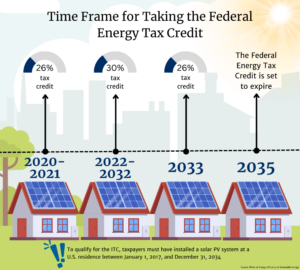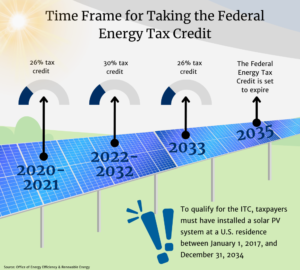Federal Solar Panel Tax Credits, Rebates & Incentives: Government Solar Program
State Solar is a foundation that provides educational resources and support to further and advance the adoption of solar panels and other green technologies, with a mission to reduce the use of fossil fuels and the negative impact they have on the environment and the climate.
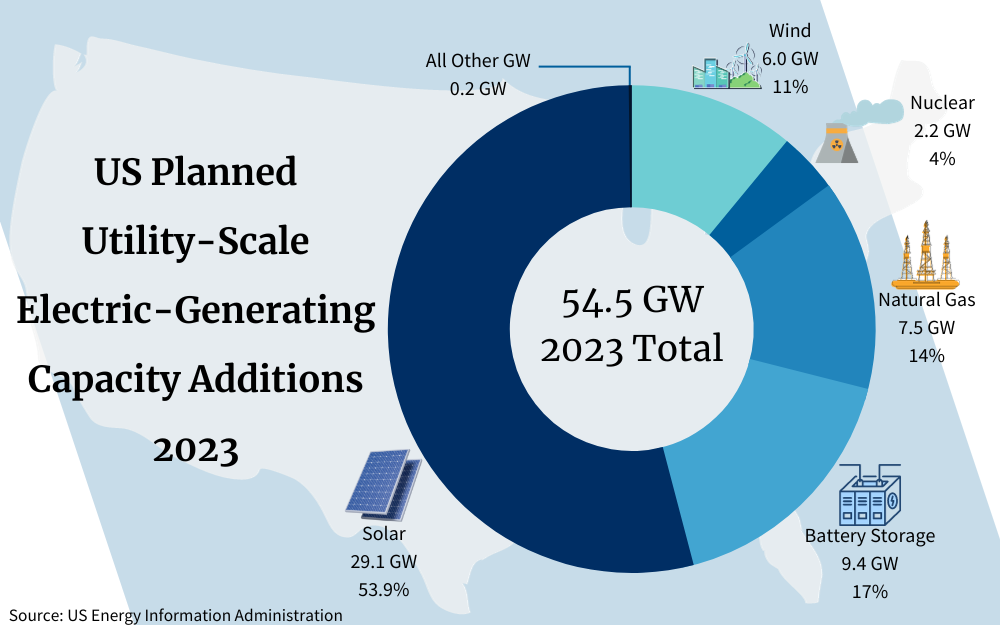
Our organization not only helps homeowners and businesses reduce their environmental impact through utilizing solar energy, but also distributes actionable sustainability training devoted to creating a greener tomorrow.
Reducing fossil fuel use and establishing green energy alternatives to existing infrastructure is a primary concern for governments around the world, and the federal solar tax credit is designed to incentivize solar energy for U.S. households in every state.
Solar tax credits provide initiatives to residential customers and businesses to ease energy grid stresses through photovoltaic systems installations.
These installations reduce emissions generated by fossil fuel based electricity.
In addition to federal tax credits, many states have implemented green energy initiatives and renewable energy programs to enhance saving for individuals and businesses, in order to promote the further reduction of fossil fuel use.
Understanding how these energy programs and tax credit work can save homeowners money and decrease heavy burdens on the state and federal infrastructure.
What Is the Federal Solar Tax Credit? Solar Investment Tax Credit (ITC)
The federal tax credit for solar photovoltaics (ITC) was established in the last few years and is available to reduce the cost of installing solar panels by a specific percentage.
The percentage is based on the year in which the solar panel system was installed.
How Tax Credits Work
Tax credits are a dollar amount that is deducted from the tax liability you owe.
For example, if you owe $5000 in income tax after filing, a tax credit would reduce that amount by a specific dollar amount, outlined by the federal government.
Understanding the Federal Tax Credit for Residential Solar Photovoltaics
The solar tax credit is available for taxpayers who have solar panel installation in a specific given year.
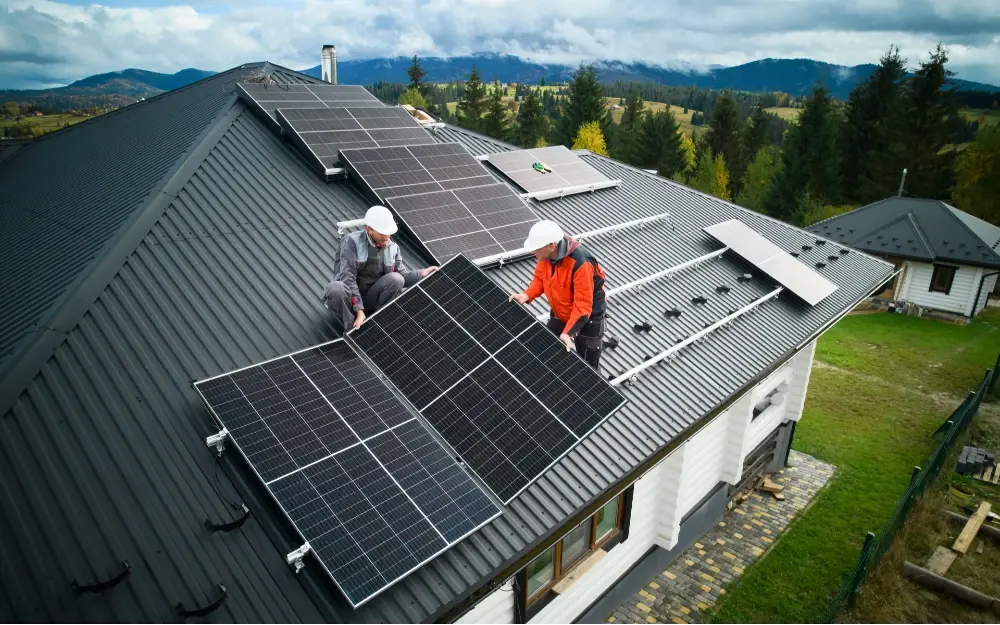

The credit extension was passed in 2022 to extend to the year 2033.
Eligibility requirements are based on taxpayer status, date the system was installed, and residency location.
Time Frame for Taking the Federal Energy Tax Credit
To qualify for the ITC, taxpayers must have:
- Installed a solar PV system between January 1, 2017 and December 31, 2034
- Installed the solar PV system at a qualified residency within the United States
The ITC percentage is based on the date the PV system was installed and is indicated as follows:
Solar panels installed during 2020 and 2021 can receive a 26 percent tax credit.
Solar panel systems installed from 2022 to the year 2032 are able to qualify for a 30 percent credit.
Systems installed in 2033 can obtain 26 percent credit.
The credit is set to expire in 2035.
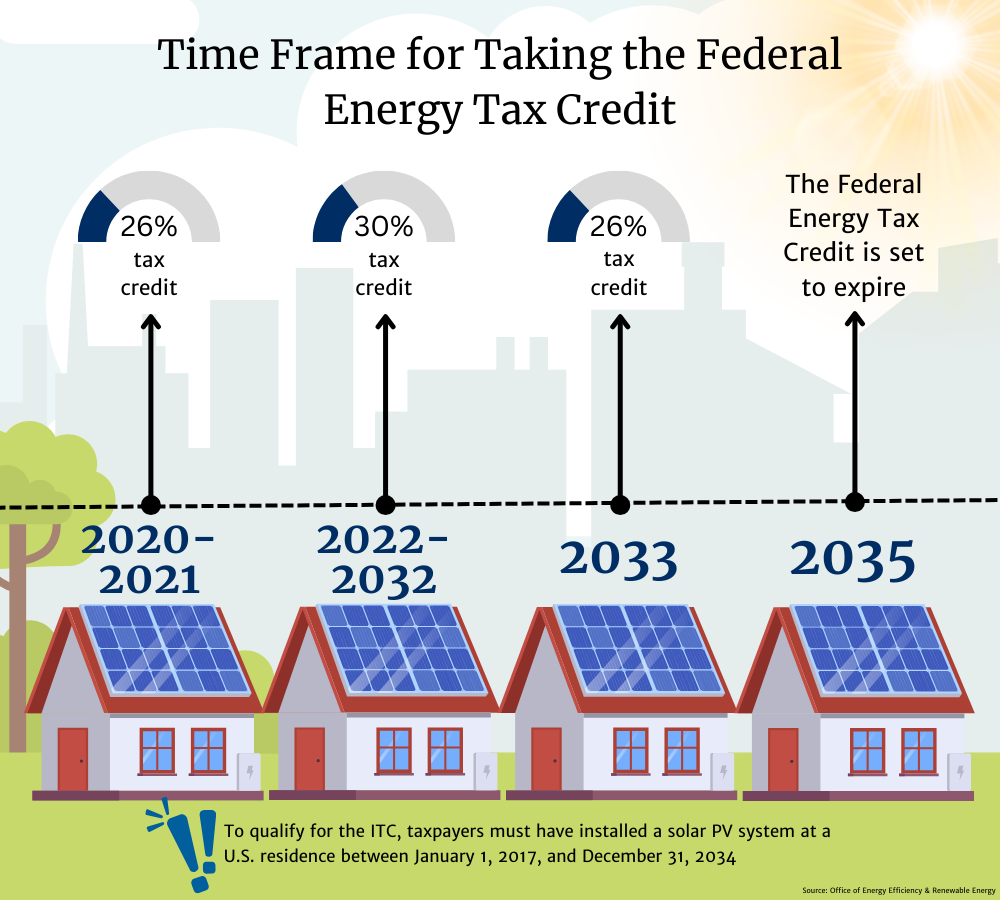
How To File for the ITC
To file for the federal solar tax credit, you need to use IRS Form 5695.
The form is included with the standard 1040. The 5695 form also provides other energy credit options not discussed on this page.
Federal Tax Credit for Business Solar Photovoltaics
Federal solar tax credits for businesses are available based on a separate set of guidelines.
The fact sheet provided by the U.S. government outlines the conditions for qualification and other information on their published document.
What Will the Government Pay For? (Expenses) How To Figure the ITC Tax Credit
The federal government will provide a tax credit for specific expenses incurred during the installation of solar panels in a residential setting.
The following expenses can be included in the total cost:
- Solar panels and PV cells used to power appliances and other parts of the home
- Installation costs charged by the contractor, including assembly, site preparation, required permits, inspection, and developer fees.
- Materials, such as wiring, mounts, and current inverters to make the system operational.
- Batteries and other storage materials with capacity rating greater than 3 kWh
The following expenses may not be included in the cost:
- Additional appliances and parts that will be powered by the system (for example, you can’t also install an AC unit and include that cost).
- Batteries and energy storage materials that do not meet current capacity thresholds outlined by the ITC
- Sales Tax
State Solar Incentives: Net Metering, Rebates and Energy Certificates
In addition to the federal solar tax credit, many states offer solar panel incentives, net metering and other options to reduce the cost of solar panel installation and increase green technology energy use among both residents and businesses.
Each state has specific programs available.
These can impact the total amount of the ITC you are able to take.
Each state also has its own unique cost of electrical energy.
Costs are based on the type of power generation available, the landscape and a number of other factors
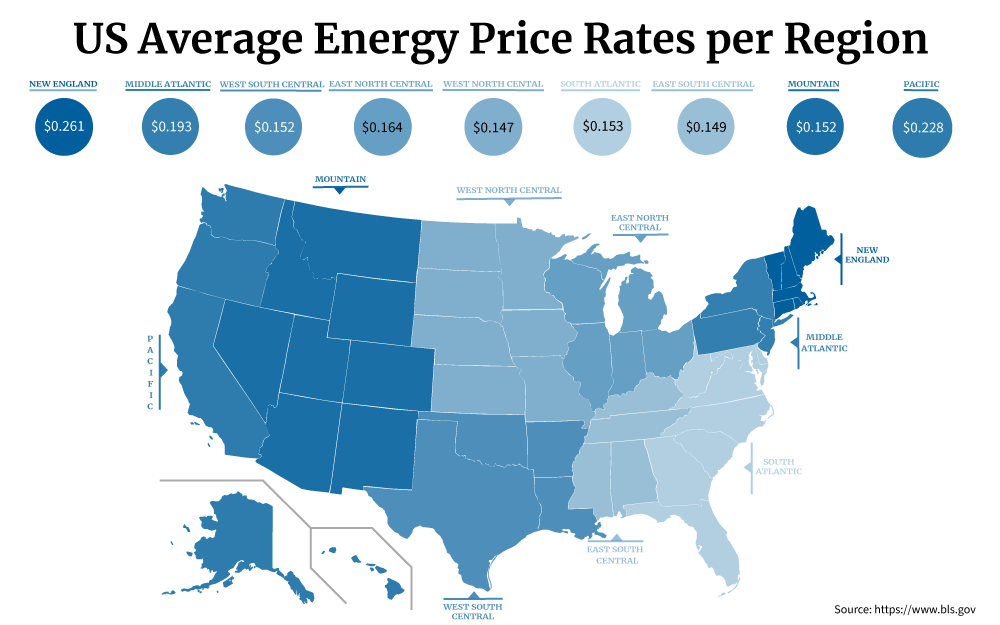
Get Answers From the IRS on the Energy Credit: Resources

